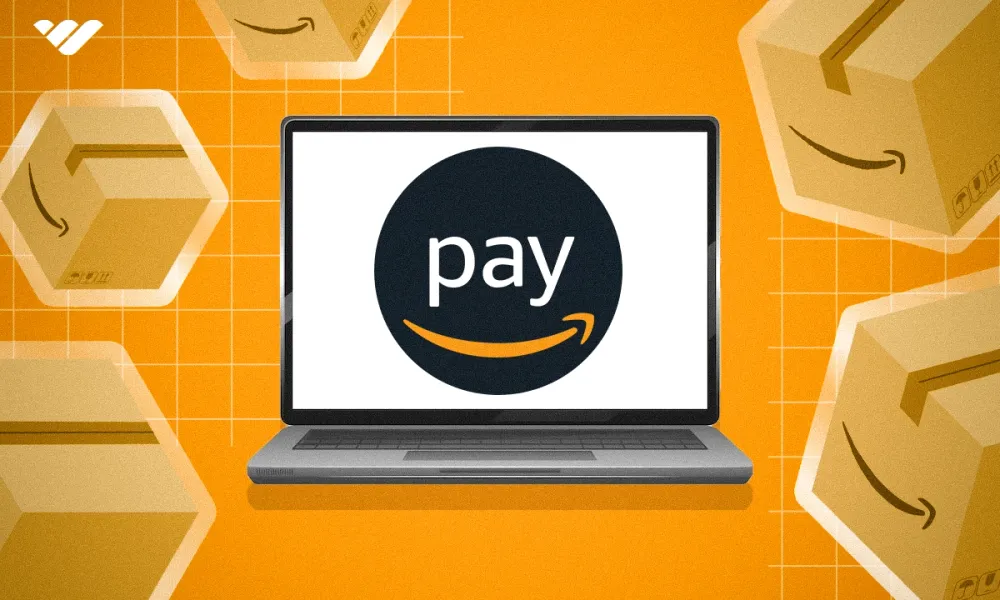Start your online boutique with low costs & zero experience. This step-by-step guide shows you how to launch, market & grow a successful store.
Key takeaways
- You can start an online boutique with low startup costs and zero experience.
- Choosing a specific niche helps attract customers and differentiate from competitors.
- A business plan serves as a roadmap to avoid costly mistakes.
- Wholesale offers higher profit margins while dropshipping requires less upfront investment.
- Social media marketing drives steady traffic and sales for boutiques.
Guess what - you don’t need a ton of money or experience to start a successful online boutique. So if you think you need thousands of dollars, a fancy degree, or years of retail experience to launch one? You’re going to be pleasantly surprised.
But, that is what often stops people from even trying.
The truth?
You can start an online boutique right from your laptop, with low startup costs and zero experience as long as you know the right steps. You don’t need to rent a storefront, stockpile inventory, or figure it all out on your own.
Sounds pretty great, right?
If you’re ready to stop overthinking and finally launch your boutique, this guide will walk you through everything you need to know - step by step.
Online boutiques vs physical stores
For starters, what is an online boutique compared to a brick-and-mortar store? Put simply, it’s a small, curated online store that sells a specific type of product. Think trendy fashion, handmade accessories, or even niche home decor.
Unlike big-box retailers, online boutiques focus on a unique style or theme, making them stand out in the crowded ecommerce world.
Why online boutiques are blowing up right now
Online boutiques are everywhere, and for a good reason. Shopping habits have changed. People love finding unique, stylish products without stepping foot in a store.
Social media, influencers and user generated content have also made it easier than ever to turn a small boutique into a booming business. A single viral post can send sales through the roof.
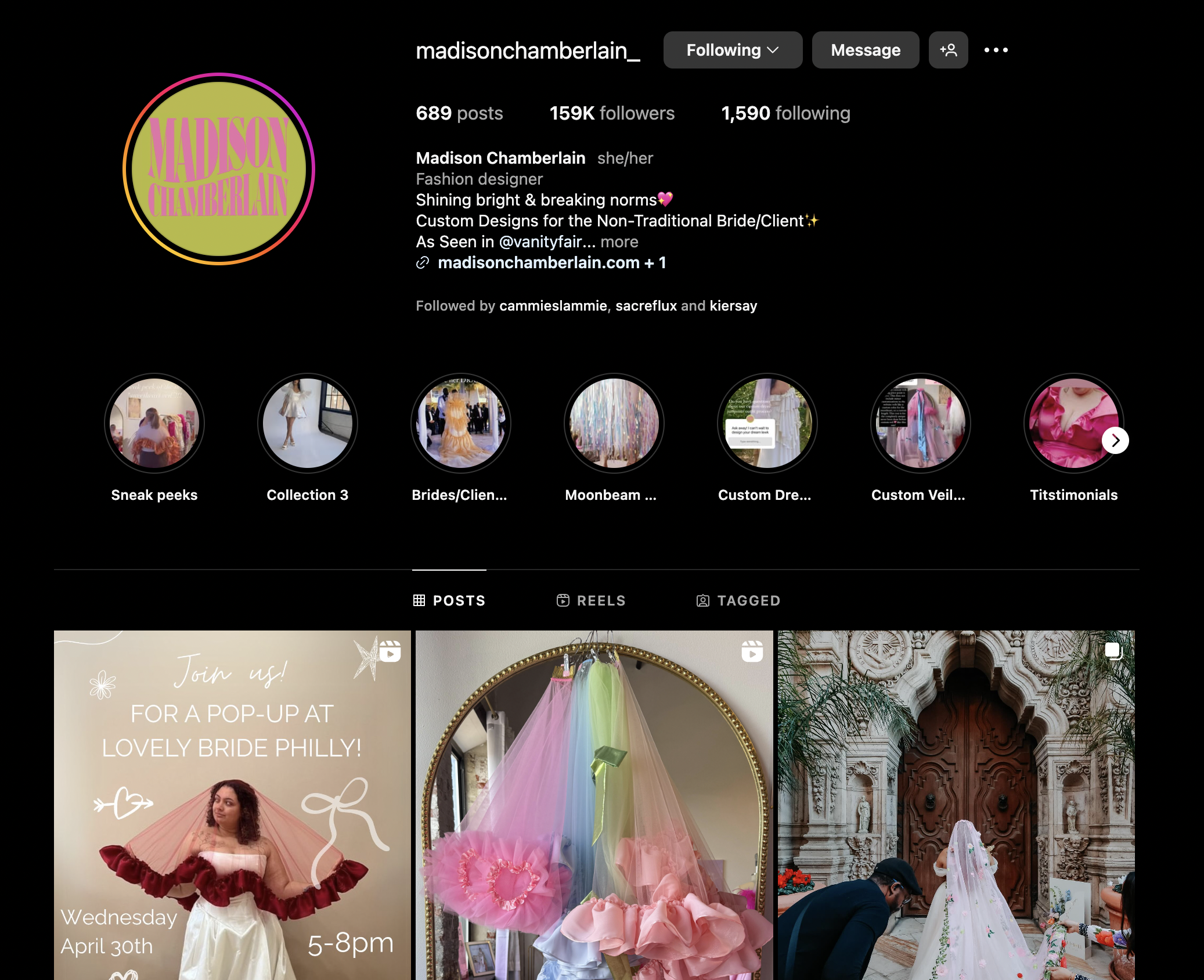
Big brands used to dominate retail. Now, small businesses and independent brands are taking over.
Customers want personalized shopping experiences, not just mass-produced items. That’s why online boutiques are thriving.
Why starting an online boutique is a smart move
Starting an online boutique comes with some serious advantages:
- Low startup costs: No need for a physical store, expensive inventory, or a huge budget. You can start small and scale up and make a lot of money online.
- Flexibility: Work from anywhere, set your own hours, and run your boutique around your lifestyle.
- Global reach: Sell to customers across the country or even worldwide. You’re not limited to a local audience. Think local pop-ups and collaborations with like-minded stores around the world.
Here are some additional guides to help you along the way:
- How to start an online business
- How to create and sell courses on Whop
- Side business ideas to start this year: How to make up to $10,000 a month
How to start an online boutique: 8 steps for success
Starting a boutique sounds exciting, but where do you even begin? Do you pick a name first? Find suppliers? Set up a website? It can feel like a lot.
The good thing is that you don’t have to figure it all out on your own.
This step-by-step guide will show you exactly how to start an online boutique without the stress.
Step 1: Choose your niche and define your brand identity
Choosing a niche is the first and most important step in how to start an online boutique. Trying to sell everything to everyone won’t work. The most successful online boutique owners focus on a specific style, product type, or target audience to make sell online and stand out.
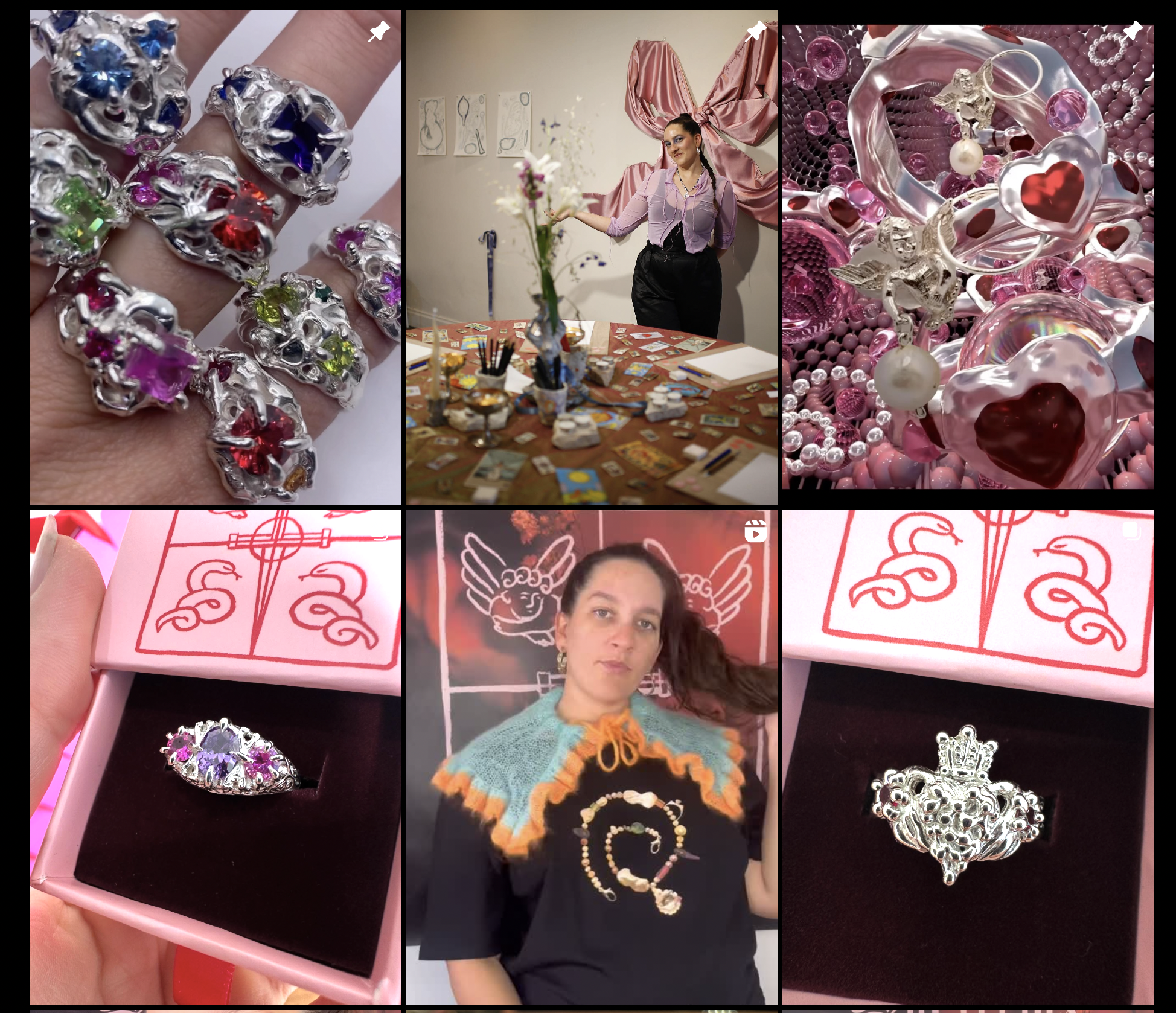
A strong niche helps you attract the right customers, differentiate from competitors, and build a brand people remember.
Think about what excites you. Are you passionate about sustainable fashion, handmade jewelry, or plus-size clothing?
How to pick the right niche
Don’t just pick a niche randomly; do some market research to make sure it’s profitable.
- Check demand: Use Google Trends, Etsy, and Amazon to see if people are searching for the type of products you want to sell.
- Look at competitors: A little competition is good. It shows there’s demand, but you need to find a way to stand out.
- Know your target audience: Who are your potential customers? What styles do they love? What problems do they have? Understanding this will help you create a brand that connects with them.
Define your unique selling proposition (USP)
Your USP sets your boutique apart from others. Ask yourself:
- What makes your boutique different?
- Are you offering affordability, exclusivity, or premium quality?
- Do you sell products customers can’t easily find elsewhere?
Instead of selling "women’s clothing," a stronger USP would be affordable, trendy fashion for petite women, or handmade jewelry inspired by nature. The more specific, the better.
Learn more about finding your niche and making a profit right here:
- The best ecommerce niches for selling online
- Great ecommerce niche blogs (and why you should start one)
Build a strong brand identity
Once your niche is clear, create a brand people will recognize and trust.
- Pick a business name: Choose something catchy, memorable, and easy to spell. Make sure the domain is available for your online boutique website.
- Create a logo: A professional-looking logo builds trust. Use Canva or hire a designer.
- Choose brand colors: Colors affect how people feel about your boutique. Soft pastels feel feminine, while bold colors feel edgy.
- Develop a brand voice: Will your boutique sound fun and playful or elegant and sophisticated? Your tone should match your target audience.

Need some help getting to grips with your strategy? These resources will help:
- What is digital marketing? Types, examples, and expert tips
- Personal branding examples (and how to create your own brand identity)
- The benefits of blogging for business: Why you should include a blog in your digital marketing plan
Step 2: Create a business plan
You might be wondering, “Do I really need a business plan?” The short answer is: yes, if you want a successful online boutique instead of an expensive hobby. A solid business plan keeps you focused, helps avoid costly mistakes, and ensures you don’t waste time or money.
Think of it as a roadmap. It doesn’t need to be complicated, but it should outline your goals, financial and strategic business plan, and marketing strategy to guide your boutique’s success.
Executive summary: Your business at a glance
This is a quick overview of your online boutique business. If someone asked, “What’s your online boutique market all about?”, this section should be your answer.
A strong executive summary answers:
- What products will you sell?
- Who is your target audience?
- What makes your boutique unique?
Keep it clear and simple. No one needs pages of details; just enough to explain your whole business idea or model in a few sentences.
Market analysis: Know your industry
Before launching, do some market research online. A great business plan is built on facts, not guesses.
- Check demand: Use Google Trends, Etsy, and Amazon to see what’s trending in your niche. If no one is searching for it, selling it will be tough.
- Study competitors: Look at similar boutiques. What are they doing well? Where can you stand out?
- Define your target audience: Who are your potential customers? What do they love? What problems do they have?
The more you understand your target market, customer and market, the easier it is to boost sales and grow your boutique business.
Need a little help? No problem:
- What is a target persona and how do you create one?
- Customer behavior analysis: What is it, how do you conduct it, and why should you do it?
- How to market yourself on social media and grow your brand
Products and pricing strategy: What will you sell?
Now, let’s talk products and pricing.
- Cost per item: How much do you pay for each product?
- Profit margin: How much will you mark it up?
- Competitor pricing: Are you pricing too high or too low?
You need to cover startup costs, shipping, and marketing, while keeping prices competitive.
A common approach is to double or triple your cost price, but always check what similar boutiques are charging.
Marketing and sales strategy: How will you get customers?
Even the best boutique won’t sell if no one sees it. A marketing strategy ensures your store gets traffic and makes sales. Start with social media marketing. Instagram, TikTok, and Pinterest are huge for online boutiques.
Posting consistently, working with influencers, and engaging with your audience can drive steady traffic. Paid ads on Facebook, Instagram, and Google can boost visibility, but if you’re on a budget, focus on organic marketing — social media, email marketing, and other influencer marketing and collaborations (check out how Whop's content rewards can help you get more social media views for less budget!).

Want to level up your strategy? We’ve got some great advice, guides, and expert tips:
- The best content marketing tools for your business
- What is a marketing funnel (and do you need one)?
- Great marketing campaigns that will inspire your next big idea
Financial planning: Know your numbers
How much money do you need to launch? Common expenses include:
- Website costs: Domain, hosting, and an ecommerce platform like Shopify.
- Inventory or dropshipping fees: Depending on your business model.
- Marketing and advertising: Paid ads, influencer collaborations, and content marketing.
- Packaging and shipping costs: Don’t forget sales tax if required.
Setting a budget and tracking every expense keeps your business finances under control. Even a simple spreadsheet works a treat.
Next reads:
- How much does it cost to start a business?
- What is zero-based budgeting & why is it important for business owners?
Step 3: Source your products
You’ve planned your first online boutique, picked a niche, and mapped out your business plan - now it’s time to find the right products. Sourcing products is a big deal. It affects pricing, shipping, and your customers' experience.
Get it right, and you’ll have a smooth-running online store. Get it wrong, and you could end up with slow deliveries, low-quality products, or unhappy customers.
Luckily, there’s more than one way to source products for your boutique business. The best option depends on your budget, business model, and how hands-on you want to be.
Wholesale suppliers: Buy in bulk, sell for profit
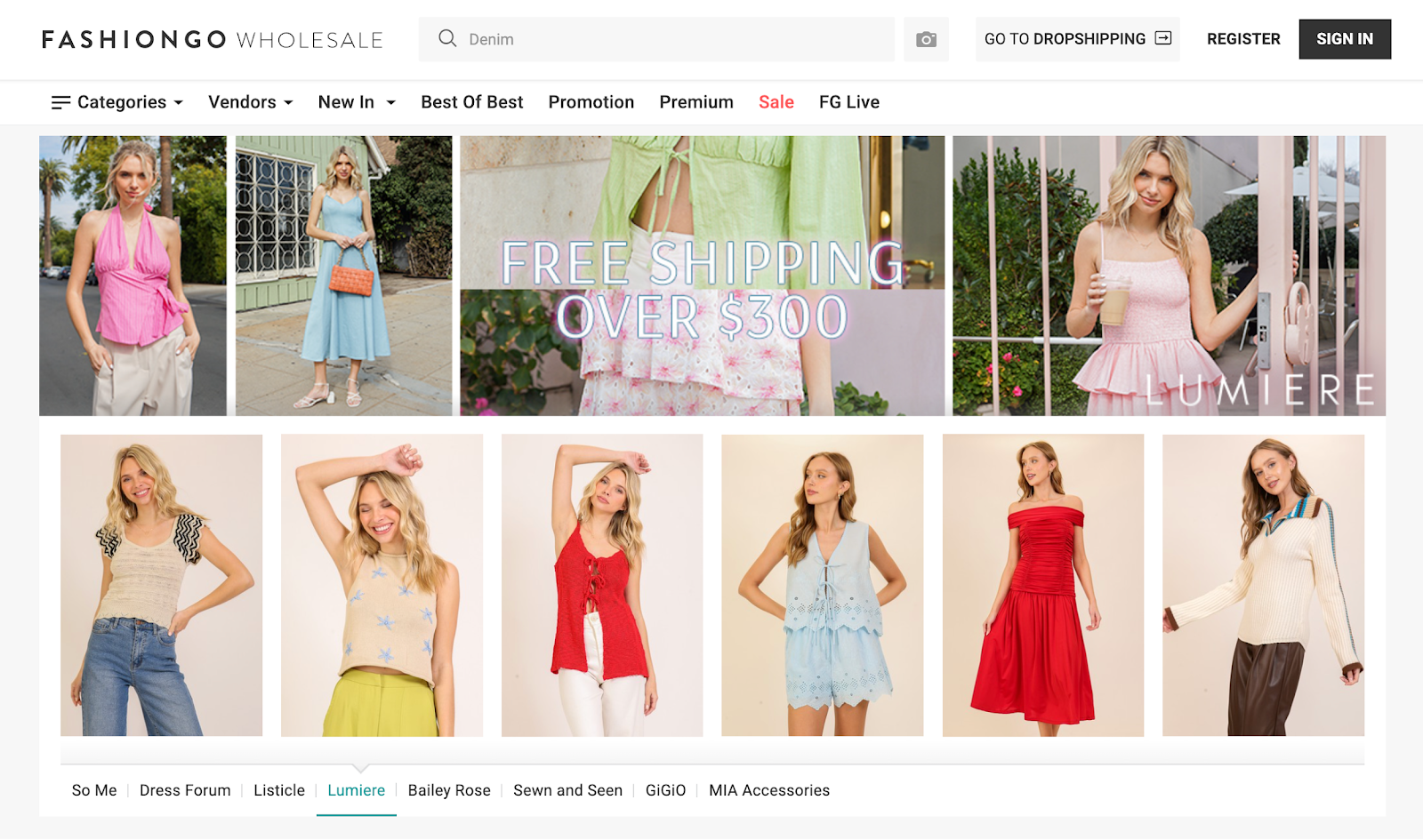
Buying wholesale means purchasing products in bulk at a lower price and selling them at a markup. This method gives you full control over branding, packaging, and order fulfillment.
Pros:
- Higher profit margins
- Faster shipping since you control inventory
- More customization options for branding
Cons:
- Requires upfront investment
- You need storage space for inventory
Where to find wholesale suppliers:
- FashionGo, Faire, Tundra: Best for boutique owners selling trendy fashion and accessories
- Alibaba and DHGate: Great for bulk orders, but requires careful vetting
- Local trade shows: Allows you to inspect product quality firsthand
Still need a little guidance? No problem! Our resources are here to help:
- Wholesale vs retail: Definitions and key differences for ecommerce business owners
- Thinking about going into reselling? Here’s how to find wholesalers
Dropshipping: Sell without holding inventory
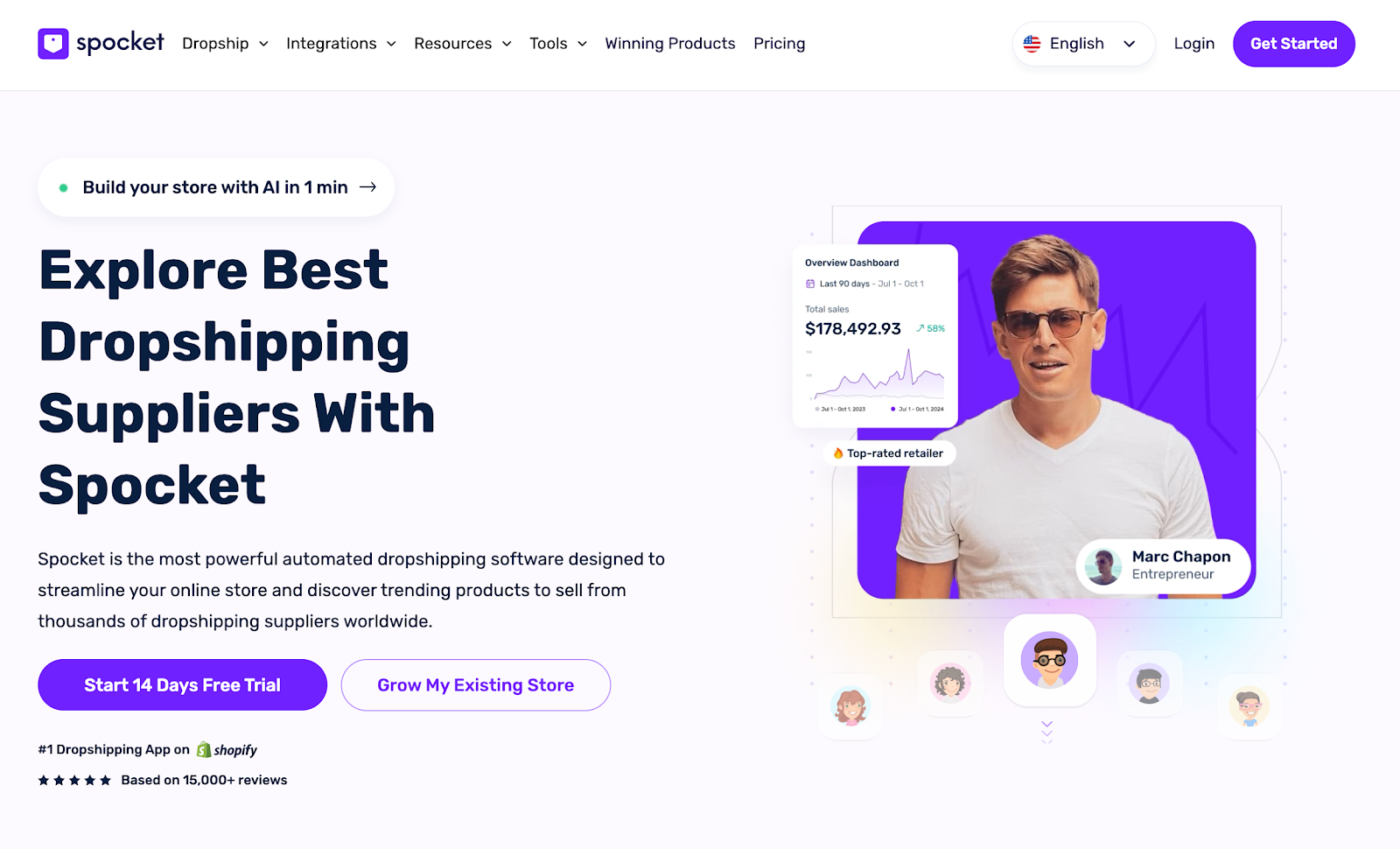
Dropshipping allows you to sell products without storing or shipping them yourself. When a customer places an order, your supplier ships it directly to them. This low-risk business model is great if you’re working with a smaller budget.
Pros:
- No upfront inventory costs
- No need for storage or shipping logistics
- Easy to test different products
Cons:
- Lower profit margins compared to wholesale
- Less control over shipping costs and delivery times
Best dropshipping platforms:
- Spocket and Modalyst: High-quality, fast-shipping suppliers
- AliExpress and CJ Dropshipping: More affordable but often have longer shipping times
For even more insights about dropshipping, check these out:
- Dropshipping vs reselling: What is the difference?
- The best dropshipping products for beginners
- Dropshipping vs ecommerce: How do the two differ?
Print-on-demand (POD): Sell custom designs
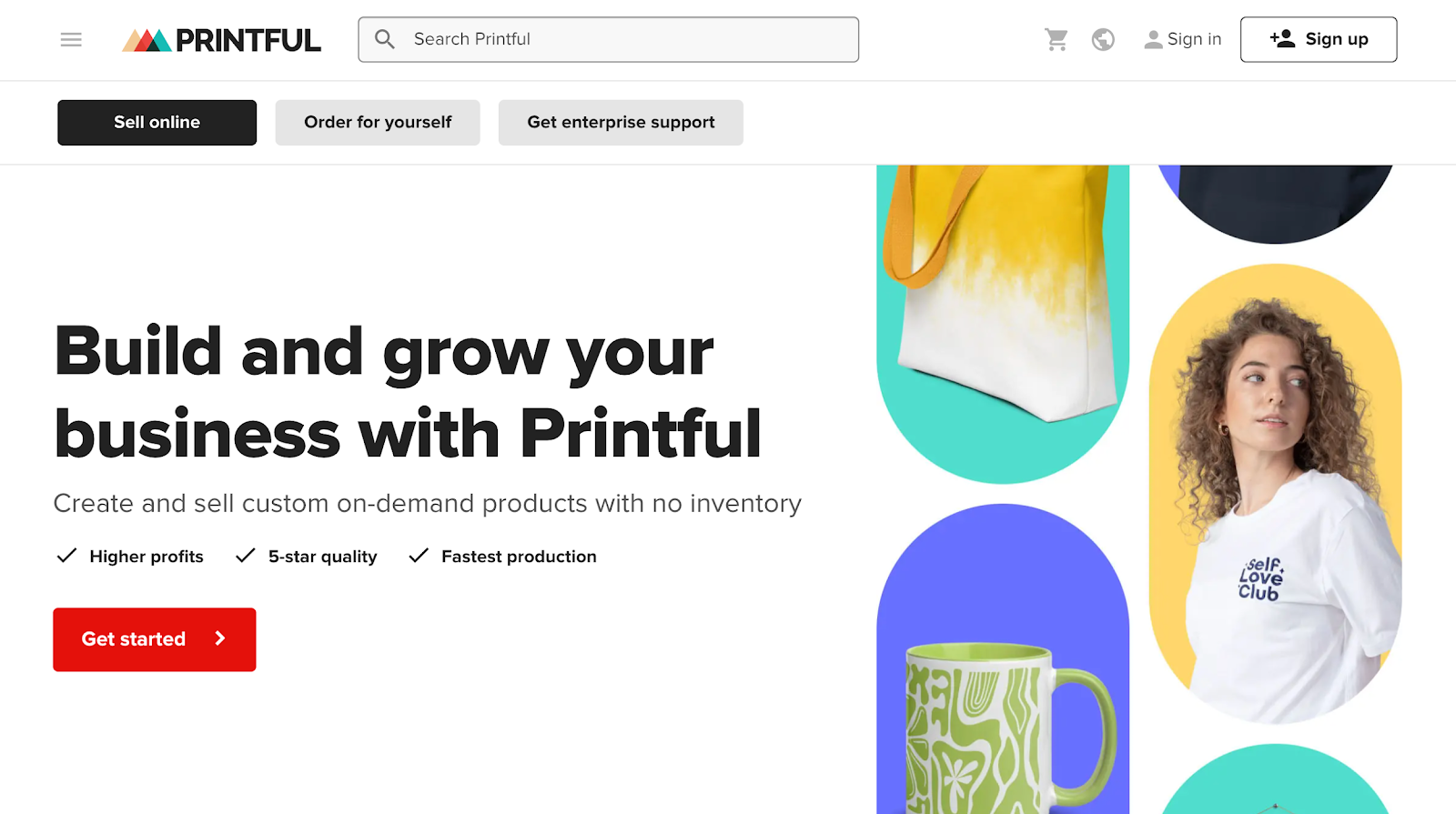
Do you have clothing business and want to sell custom-branded products without handling inventory? Print-on-demand allows you to design products and have a supplier print and ship them when an order is placed.
Pros:
- No upfront inventory costs
- Great for selling unique, branded items
- Easy to scale without worrying about stock
Cons:
- Higher product costs
- Limited customization beyond designs
Top print-on-demand suppliers:
- Printful: High-quality apparel, home decor, and accessories
- Printify: Wide range of products with flexible supplier options
- Gooten: Great for global shipping
Read even more about print-on-demand services and products:
- The best print-on-demand products this year
- How to start a print-on-demand business: Ultimate guide
- Printify review: Is it really the best POD service?
Handmade or self-produced products: Sell your own creations
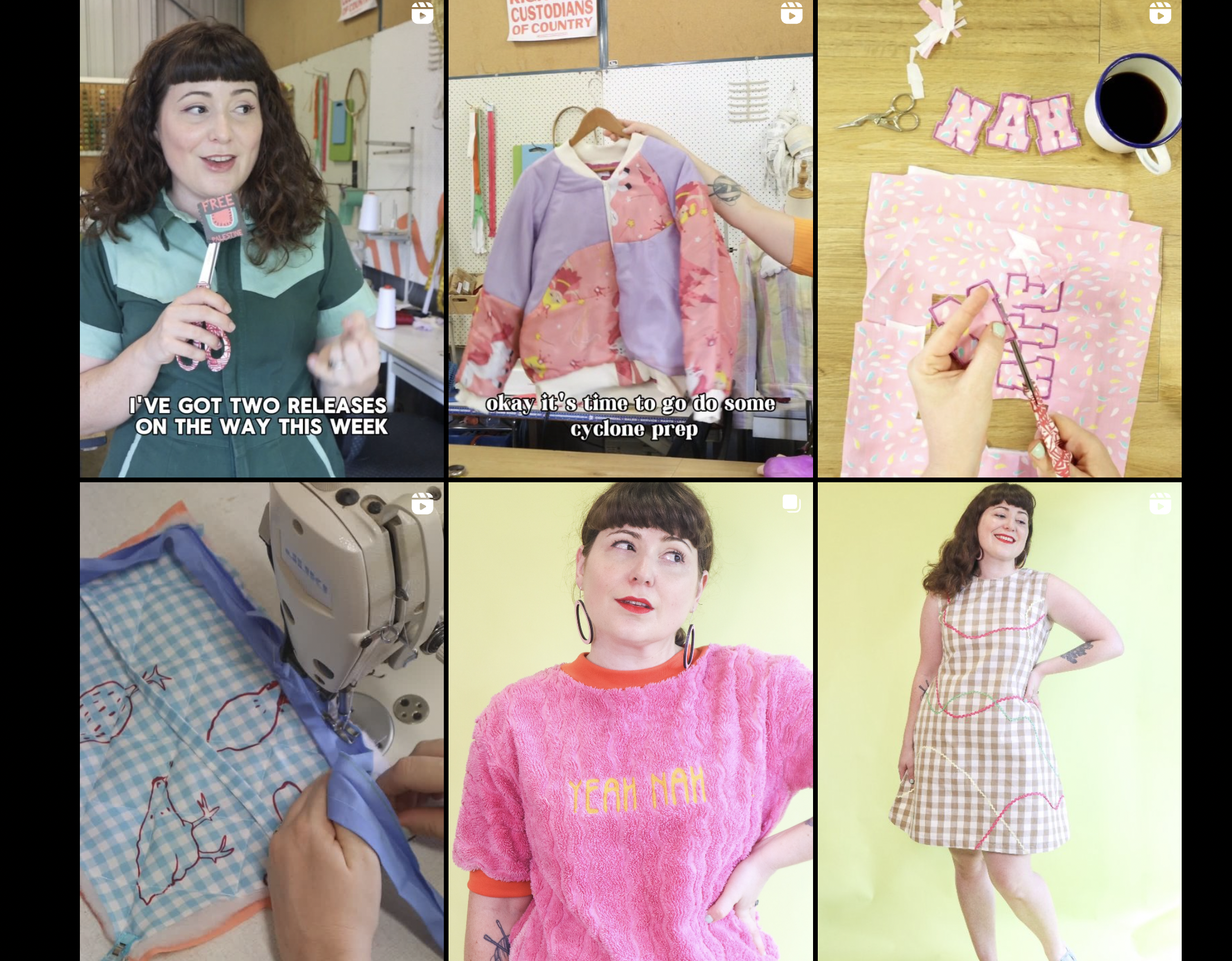
If you’re crafty, you can make a private label and sell your own products. This is perfect for boutique owners who want full control over quality and branding.
Pros:
- Complete creative control
- Higher profit margins for exclusive, handmade products
Cons:
- Time-consuming
- Harder to scale unless you outsource production
You can sell handmade items on your own online boutique, or use marketplaces like Etsy and Amazon Handmade to reach more customers worldwide.
How to find reliable suppliers
A bad supplier can ruin your online boutique before it even takes off. Delays, poor product quality, or out-of-stock items will hurt your reputation. Here’s how to avoid that:
- Check reviews and ratings: Platforms like Alibaba, Faire, and Spocket have reviews from other boutique owners. Read them carefully.
- Request samples: Never invest in bulk orders without testing the product first.
- Ask about shipping times:Long delivery times can kill sales. Find out how quickly they can deliver.
- Negotiate pricing: Many suppliers offer discounts for larger orders, so always ask.
Managing inventory and order fulfillment
How you manage inventory depends on your business model:
- If you buy wholesale or make your own products, track stock levels to avoid overselling. Tools like Stocky (for Shopify) or Orderhive can help.
- If you use dropshipping or print-on-demand, keep an eye on supplier stock levels. If an item is out of stock, you’ll need a backup plan.
- For all sourcing methods, automate order fulfillment where possible to avoid mistakes and speed up shipping.
Step 4: Set up your online store
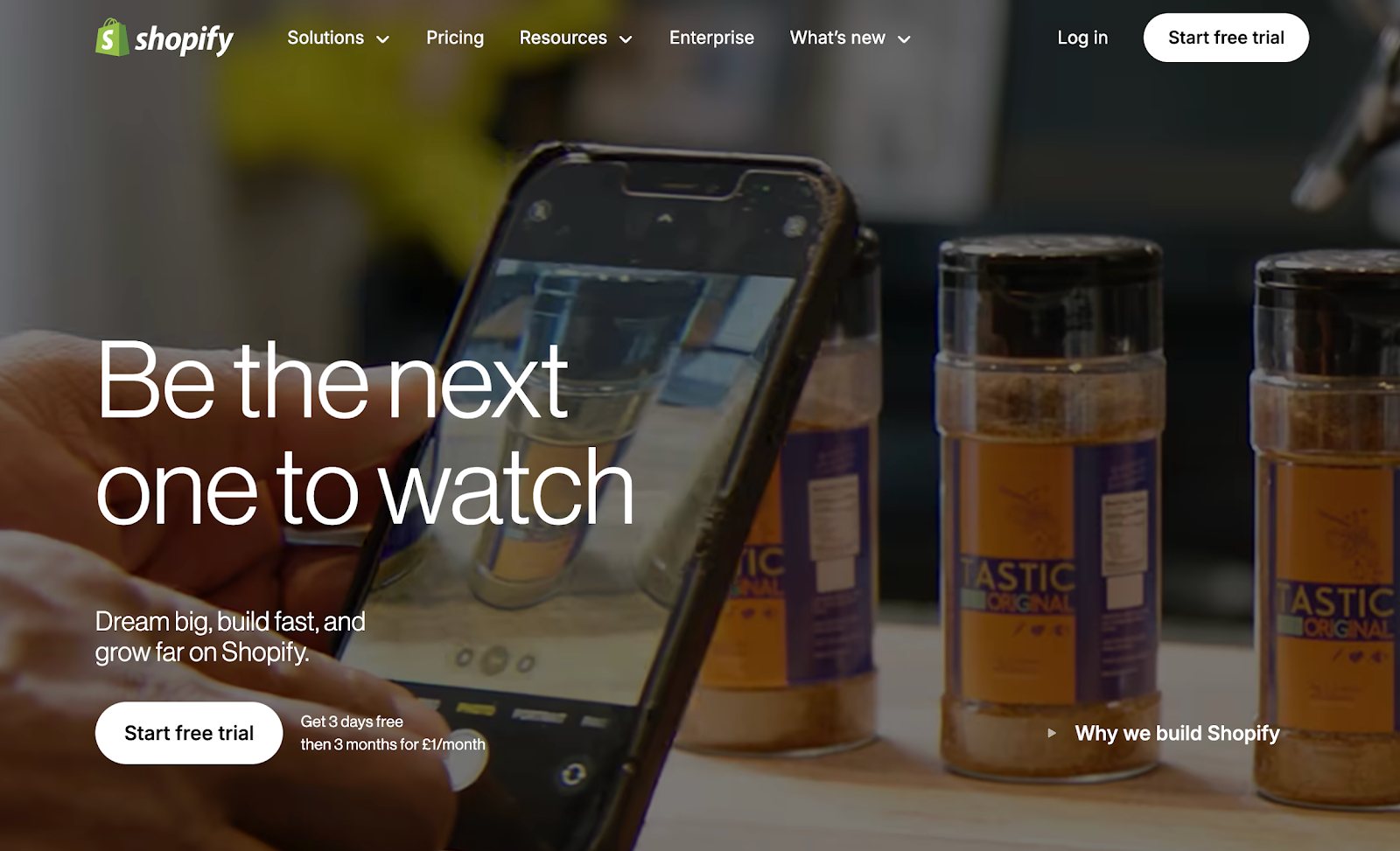
Now it’s time to build your online boutique. Your ecommerce website is your storefront, and it needs to look professional, be easy to use, and make shopping simple. If customers struggle to navigate or check out, they’ll leave (sorry to break it to you!).
First, choose an ecommerce platform to power your store. Shopify is the best option for most boutique and small business owners - since it’s incredibly beginner-friendly and has built-in tools for marketing strategy and payments. BigCommerce is great for scaling, while WooCommerce works well for WordPress users.
For selling digital products, there’s no doubt about it - Whop is the number one choice. With endless opportunities to monetize your products, build a paid community, and even charge for 1-1 calls.
Next, buy a domain name (your web address)
Platforms like Shopify and BigCommerce include hosting, but if you use WooCommerce, you’ll need separate hosting from another provider, such as SiteGround or Bluehost.
Mobile browsing
Your ecommerce website should be mobile-friendly since most shoppers browse on their phones. Use high-quality product images that show items from different angles, and write descriptions that highlight why customers will love them.
Taking payments
At checkout, offer multiple payment options like credit cards, PayPal, and digital wallets to avoid losing sales.
P.S If you’re selling digital products, you can set your business up with Whop in a matter of minutes. We take care of everything, including payments and order fulfilment, keeping your business running smoothly.
You’ll also need to create key pages, such as:
- About us
- Contact
- Shipping and returns
- Privacy policy
- FAQs
These build trust and answer common questions. With your online boutique website ready, the next step is making your business official. Let’s handle the legal side.
For more help in setting up (and optimizing) your online store, take a peek at these resources:
- Shopify vs Squarespace: What’s the right choice for your website?
- The best free ecommerce platforms to create online store
- Shopify SEO: Game-changing tips to supercharge your store
Step 5: Register your business
You’re almost there! Your online boutique is set up, and now it’s time to make it official. Registering your online business protects you legally, helps with taxes, and makes your online boutique profitable and look more professional.
Customers trust registered businesses, and wholesalers or banks will require the right paperwork.
Choose a business structure
Your business structure affects taxes, liability, and paperwork. The most common options are:
- Sole Proprietorship" The easiest option but offers no personal asset protection.
- LLC (Limited Liability Company): The best choice for most online boutique owners since it protects personal assets with minimal paperwork.
- Corporation: Ideal if you plan to scale into a large boutique business with investors.
Register your business and get an EIN
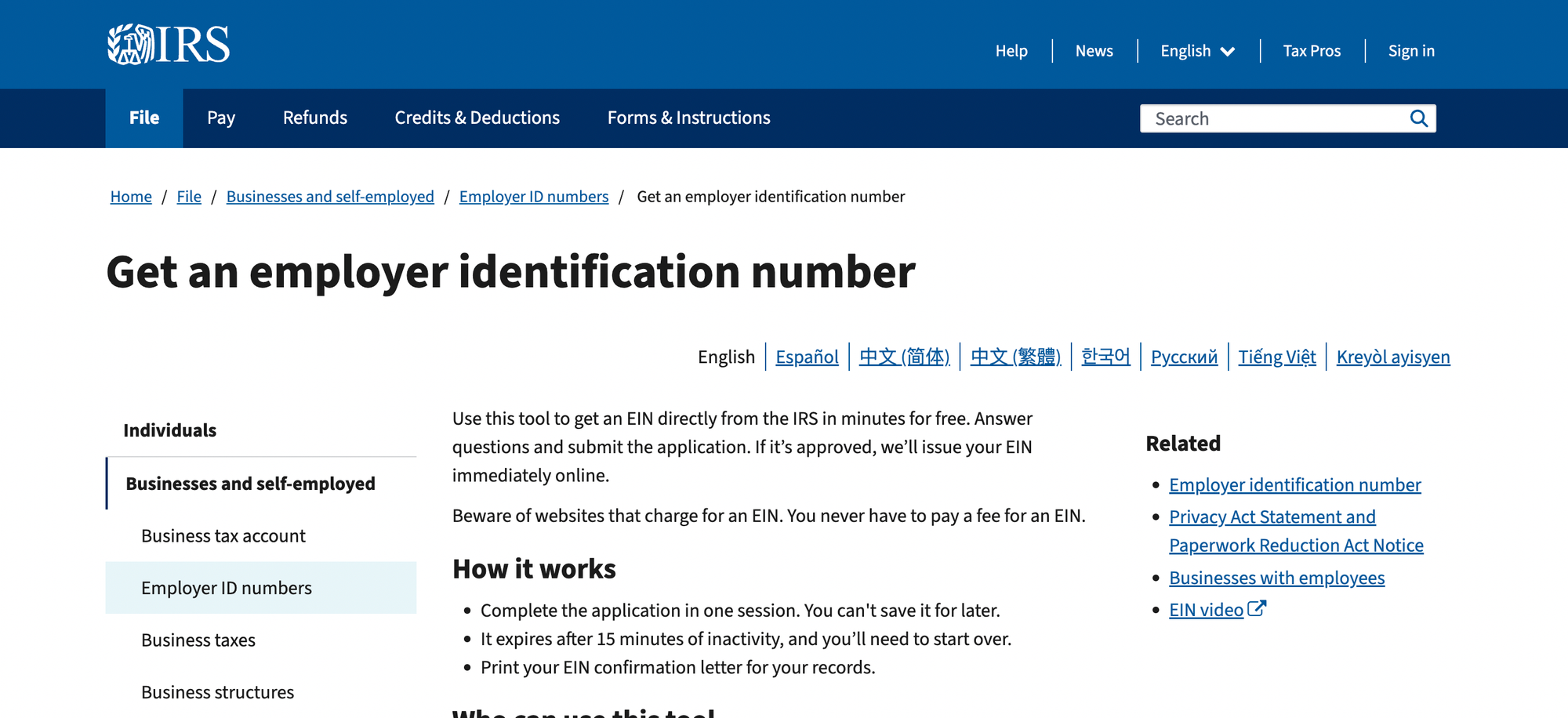
Once you choose a structure, register your business name with your state. If it’s different from your personal name, you may need a DBA (Doing Business As).
You’ll also need to apply for an EIN (Employer Identification Number) from the IRS. It’s free and required if you want to hire employees or open a business bank account.
Understand sales tax, permits, and licenses
Some states require a sales tax permit to collect sales tax from customers. Depending on your location, you may also need:
- A business license: Required in some cities and states for any online business.
- A home business permit: Needed if you’re running your online boutique from home.
Check your state’s Small Business Administration (SBA) website to avoid fines later.
Create return policies and terms and conditions
A strong return policy builds trust and boosts sales. Make sure to include:
- Return and refund policy: How long customers have to return items, refund vs. store credit, and who covers return shipping.
- Shipping policy: Expected delivery times, international shipping options, and lost package procedures.
- Privacy policy: How you collect and use customer data.
With your boutique legally set up, you’re one step closer to running a successful online boutique. Next, let’s set up payment and shipping to start making sales.
Step 6: Set up payment and shipping options

Now that your online boutique is official, it’s time to figure out how customers will pay and how you’ll ship their orders.
A smooth checkout and clear shipping options make buying easy, and keep people from abandoning their carts.
Payment options
Customers like choices when it comes to paying. The best payment options are:
- PayPal: Super popular and trusted.
- Stripe: Lets customers pay with credit cards easily.
- Shopify Payments: Built into Shopify, so no extra setup.
To make checkout hassle-free, offer a mix of credit/debit cards, PayPal, digital wallets (Apple Pay, Google Pay), and buy-now-pay-later options like Afterpay or Klarna. Remember, more options = more sales.
Shipping setup

Decide how you’ll charge for shipping:
- Free shipping: Everyone loves free shipping! You can adjust product prices to cover costs, or offer it for orders over a certain amount.
- Flat-rate shipping: Charge the same shipping fee for all orders so customers know what to expect.
- Real-time carrier rates: Let customers see actual shipping costs based on their location and order size.
For shipping carriers, USPS is the cheapest for small packages, UPS is great for bigger shipments, and FedEx is fast but pricier.
If you're using Shopify, WooCommerce, or BigCommerce, you can connect carriers and print shipping labels right from your dashboard.
International shipping
Do you want to sell worldwide? Keep these things in mind:
- Delivery times: International orders can take 2–4 weeks at a minimum. Make that clear upfront.
- Shipping cost calculators: Platforms like Shopify and WooCommerce can estimate shipping fees automatically.
- Customs rules: Some products can’t be shipped to certain countries, so check regulations before listing them. Plus, import tax may apply to the customer.
Setting up payments and shipping the right way makes shopping easy and stress-free. Offer flexible payment options, keep shipping costs clear, and make sure customers get their orders without surprises.
Step 7: Develop a marketing strategy
Your boutique is live - a small but growing market - now you need people to buy. A great product means nothing if no one knows about it. That’s why marketing is key.
Here’s how to bring in traffic and turn visitors into customers.
Make use of social media
Platforms like Instagram, TikTok, and Pinterest are goldmines for online boutiques. Post high-quality product photos, share styling tips, and use shoppable posts so customers can buy instantly.
TikTok is great for fun, short videos. Here you can show off products, do unboxing clips, or share behind-the-scenes moments.
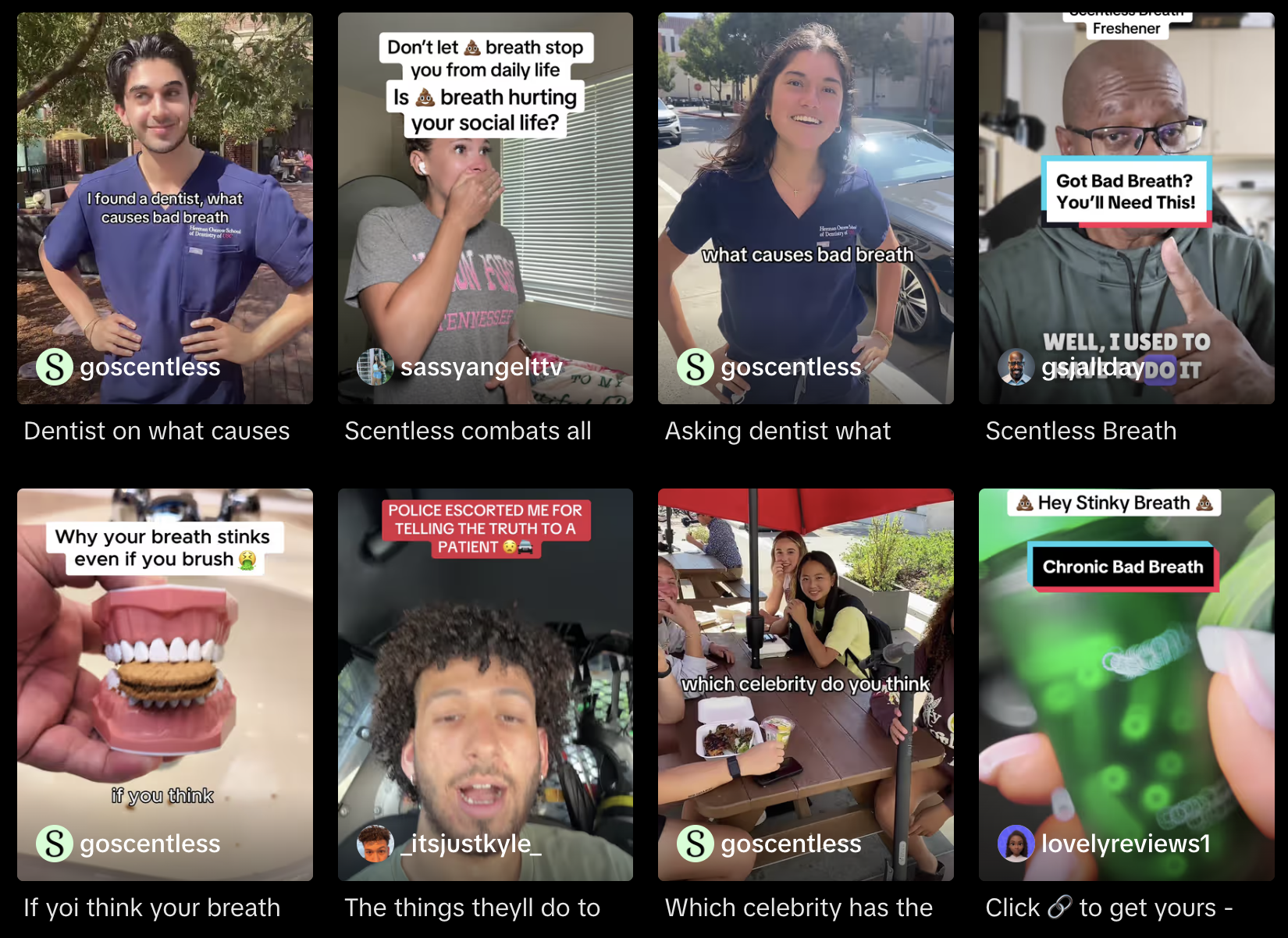
While Pinterest works like a search engine, so pin eye-catching images that link back to your store. Consistency is key so post regularly, engage with followers, and try different content to see what works.
Work with influencers
People trust influencers more than ads. Partner with micro-influencers (1,000–50,000 followers) to get in front of potential customers without spending a fortune. Send them free products in exchange for a post, or set up an affiliate partnership where they get a commission for every sale they bring in.
Use email marketing
Unlike social media, where algorithms control what people see, emails go straight to your customers. Use them to send welcome discounts, abandoned cart reminders, and exclusive sales. Tools like Klaviyo, Mailchimp, and Shopify Email make it easy to automate.
Optimize for Google (SEO)
Do you want free traffic? Make sure people can find your boutique on Google. Use the right keywords in product descriptions, blog posts, and page titles. Instead of just "blue dress," say "chic blue maxi dress perfect for summer weddings."
A blog can also bring in shoppers looking for fashion tips. Think "How to Style Oversized Sweaters" or "Top 5 Accessories Every Woman Needs."
Run paid ads
If you want fast results, paid ads work. Facebook and Instagram Ads let you target fashion lovers, while Google Ads capture shoppers searching for specific items.
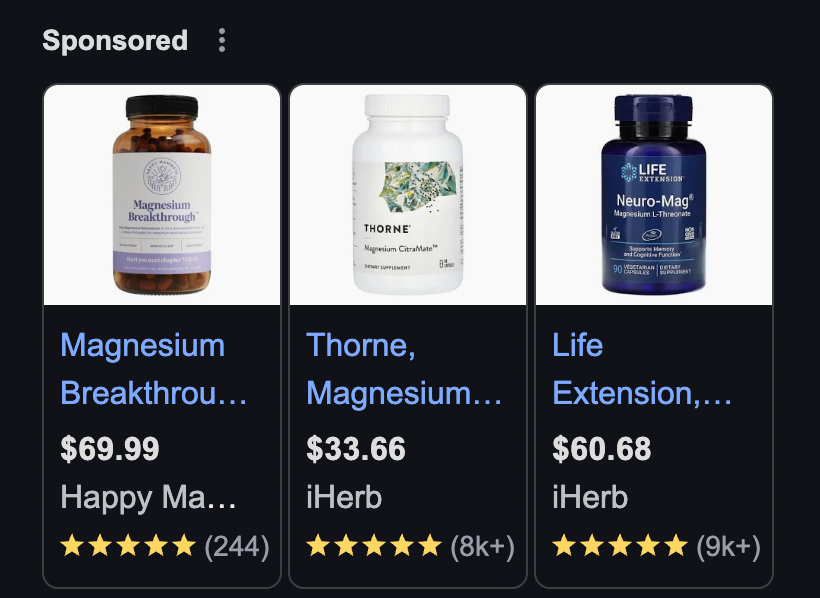
Retargeting ads remind visitors who browsed but didn’t buy. This brings them back to complete their purchase. Even a small budget ($5–$10 per day) can make a difference.
Step 8: Launch and grow your online boutique
You’ve done the work. Your boutique is set up, your products are sourced, and your marketing strategy is ready to go.
Now it’s time for the most exciting part - launching your boutique and making your first sales. A strong launch can set the tone for your success.
Here’s how to do it right.
Final pre-launch checklist
Before you go live, make sure everything is in place:
- Test your website: Check that all links work, your checkout process is smooth, and your site looks great on mobile.
- Review your product listings: Make sure images are high-quality, descriptions are detailed, and pricing is correct.
- Set up customer support: Be ready to answer questions through email, social media, or live chat.
- Confirm inventory and suppliers: If you're holding inventory, double-check stock levels. If you're dropshipping, make sure your suppliers are ready.
You only get one chance to make a first impression, so make sure everything runs smoothly before you launch.
Soft launch vs. full Launch
There are two ways to launch:
- Soft launch: Open your store to a smaller audience first, such as friends, family, or email subscribers. This lets you test everything before going big.
- Full launch: Promote your boutique to the public with social media campaigns, influencer collaborations, and paid ads.
Many boutique owners start with a soft launch, fix any issues, and then go big with just a few clicks to full launch.
Promote your launch everywhere
Once your boutique is live, you need to get as many eyes on it as possible. Here’s how:
- Announce it on social media: Post on Instagram, TikTok, and Pinterest. Use countdowns, behind-the-scenes videos, and giveaways to build excitement.
- Run a launch sale: Offer a limited-time discount or free shipping for first-time customers.
- Work with influencers: Send free products to influencers in your niche and ask them to promote your boutique.
- Use email marketing: Send launch emails with special offers and product highlights.
The more people see your boutique, the more sales you’ll make. Don’t be afraid to promote it aggressively.

Track performance and make adjustments
After launching, you need to track what’s working and what’s not. Most eCommerce platforms, like Shopify, WooCommerce, and BigCommerce, have built-in analytics. Here’s what to monitor:
- Website traffic: How many people visit your store daily?
- Cart abandonment rate: Are people adding items to their cart but not checking out?
- Best-selling products: What items are selling the most?
- Email open rates: Are customers opening your marketing emails?
Use this data to tweak your high level marketing strategy and improve sales. If customers are abandoning their carts, consider offering a discount code. If a product isn’t selling, adjust your pricing or marketing approach.
Create your online boutique with Whop
Phew - that was a lot of information to take in. As you can see, starting an online boutique takes a lot of hard work and dedication.
Luckily, you don't have to go it alone.
Whop is home to thousands of online communities, coaches, courses and guides - and many of these can help you create, launch, and grow your online boutique.
Head to the Whop Discover page, check out the ecommerce category, and you will find a whole range of resources to help you in every stage of your business. Here you can find guidance on selling with TikTok shop, setting up Google Ads, mastering dropshipping and even finding the right wholesaler or manufacturer for your goods.
These are whops created by experts who want to help you take your business to the next level.
How to start an online boutique: FAQs
How much money do I need to start an online boutique?
It depends on your business model. If you’re using dropshipping or print-on-demand, you can start with just a few hundred dollars.
If you’re buying wholesale inventory, expect to spend at least $1,000–$3,000. Your main costs will be your ecommerce platform, domain name, branding, and marketing materials.
Do I need a business license to start an online boutique?
Most states require a sales tax permit if you’re selling physical products. Some locations may also require a business license or home business permit. Check with your state’s Small Business Administration (SBA) to see what’s required.
Can I start an online boutique without holding inventory?
Yes! You can use dropshipping or print-on-demand, which means your suppliers handle storage and shipping. This is a great option if you want to keep startup costs low.
What are the best platforms to build my online boutique?
Shopify is the easiest for beginners and has built-in marketing tools. BigCommerce is great for scaling, WooCommerce is ideal for WordPress users, and Wix is a budget-friendly option. Choose the best ecommerce platform based on your needs and technical skills.
How do I find reliable suppliers for my boutique?
For wholesale products, check platforms like FashionGo, Faire, and Alibaba. If you prefer dropshipping, use Spocket, Modalyst, or CJ Dropshipping. Always order samples before committing to a supplier.
How long does it take to make money with an online boutique?
It depends on your marketing strategy and target audience. Some boutique owners see sales within the first few weeks, while others take months to gain traction. Consistency with content marketing, influencer marketing, collaborations, and email marketing is key to growing a profitable business.
Can I sell more than just physical products?
Absolutely! With Whop, you can sell digital products, memberships, and exclusive content to build additional revenue streams. Many boutique owners monetize their brand through styling guides, private shopping communities, and online courses.


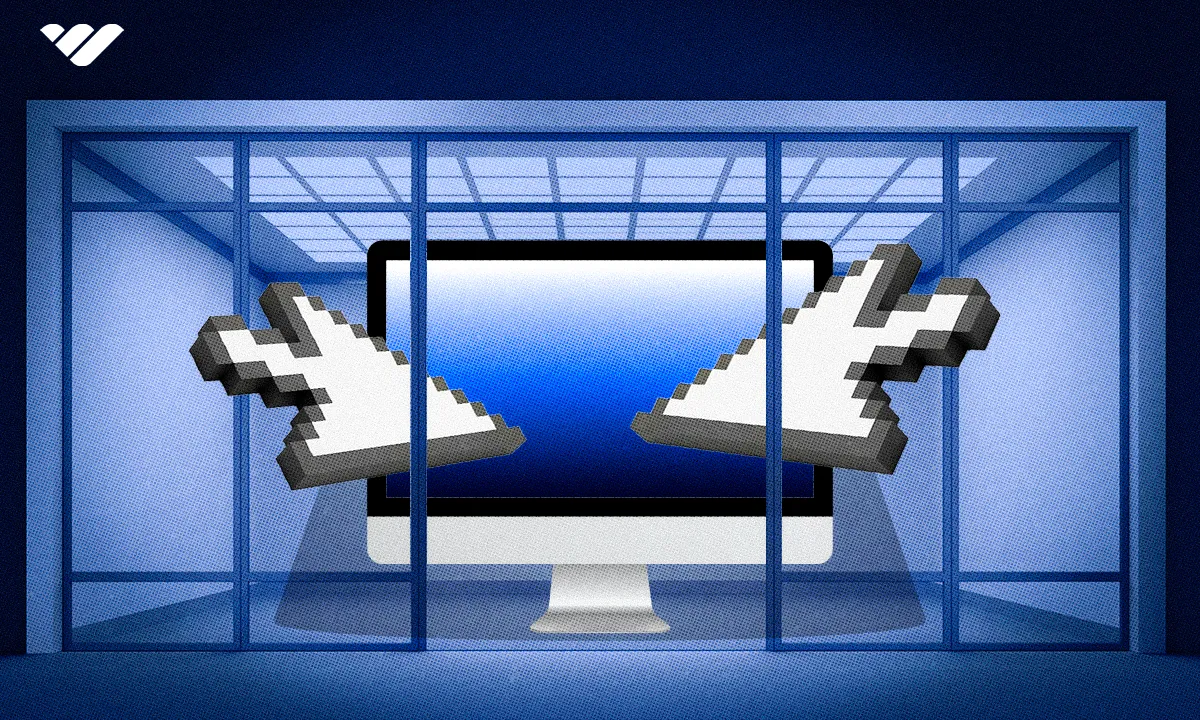
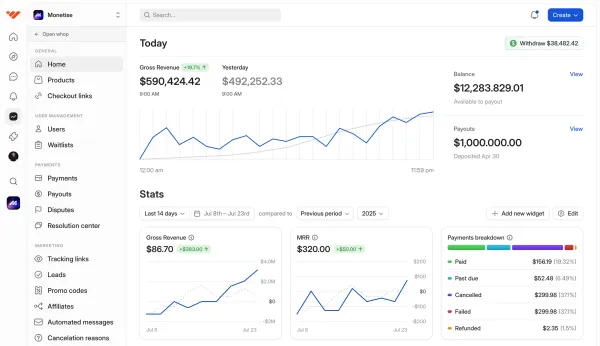
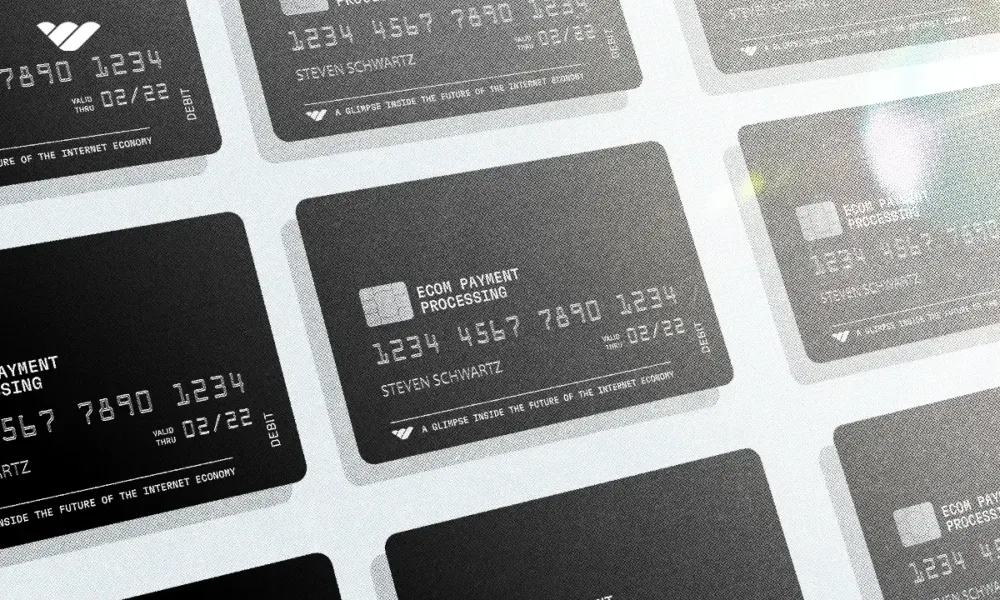
![8 best BNPL providers for your business [2026]](/blog/content/images/size/w1000/2024/08/X-Best-BNPL-Companies--buy-now--pay-later--for-your-business.webp)
![How to sell digital products without a website - ultimate guide [2026]](/blog/content/images/size/w1000/2024/02/How-to-Sell-Digital-Products.webp)

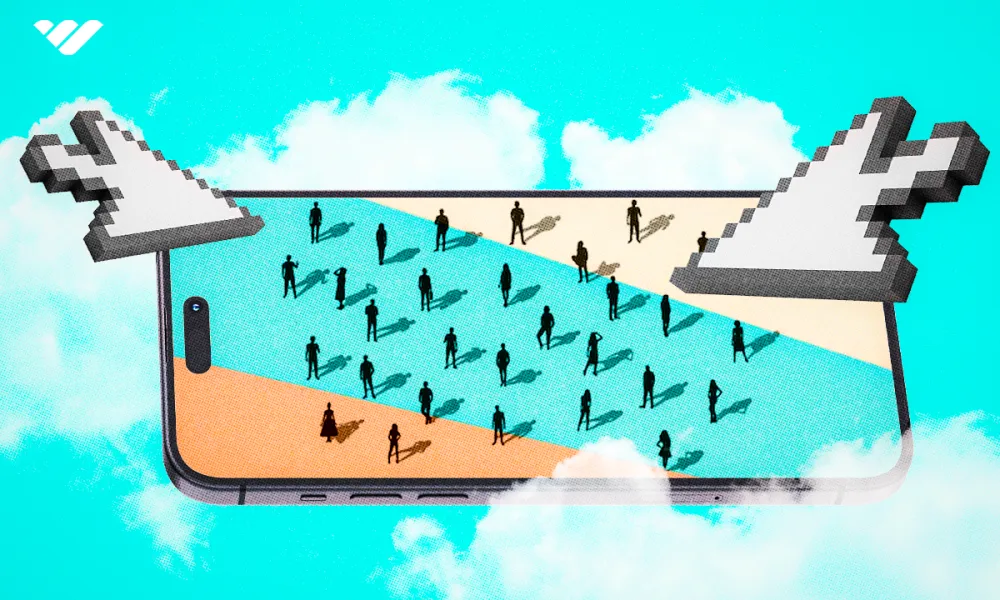

![12 best payment processing companies for ecommerce [2026]](/blog/content/images/size/w1000/2024/10/Top-10-Payment-Processing-Companies-for-Ecommerce-Feature-Image.png)


